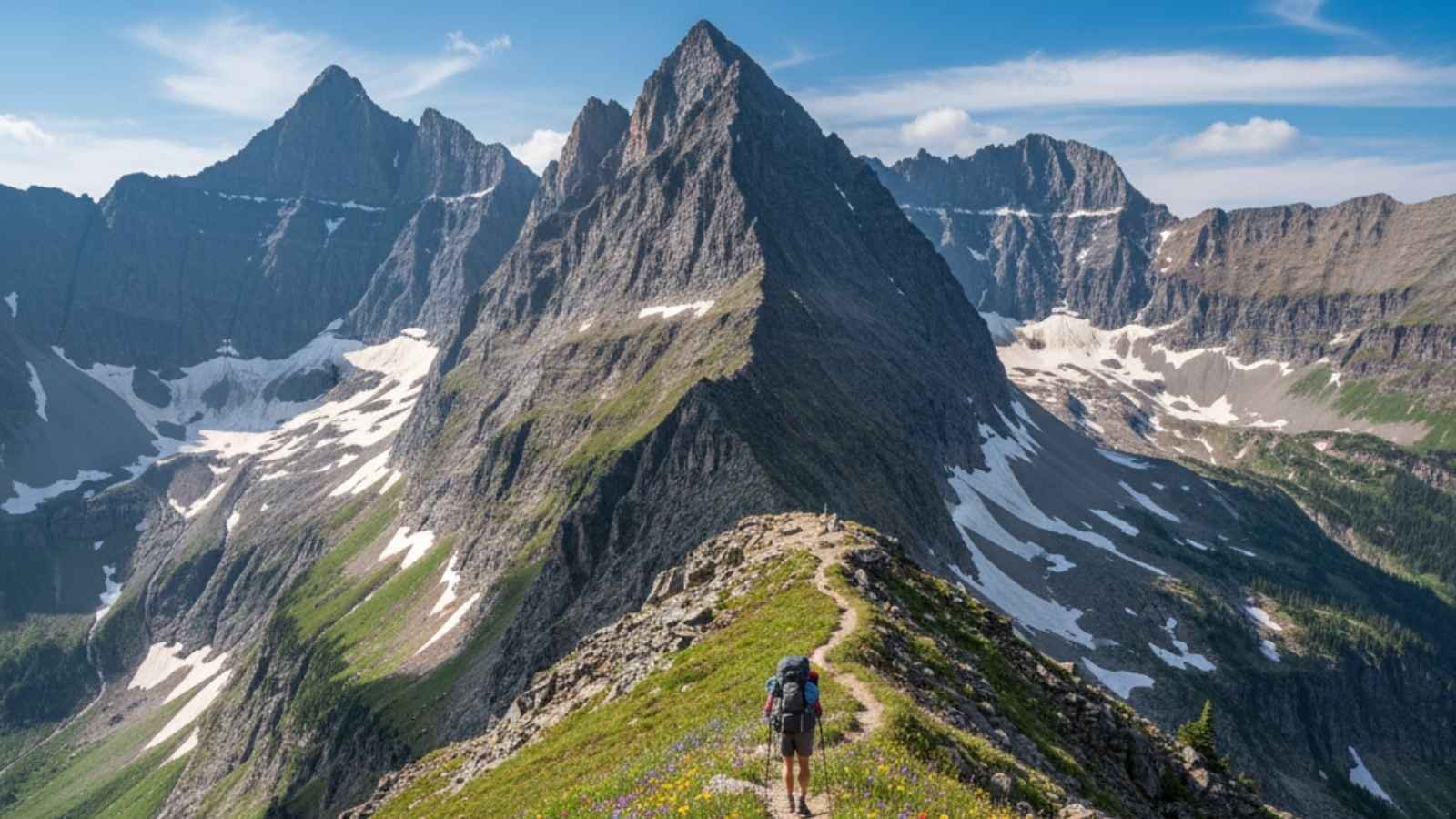
Some hikes don’t just change your scenery—they change your life’s rhythm. One step leads to another, and before you know it, you’re miles away from deadlines, breathing air that feels sharper, cleaner, and somehow truer.
The kind of air that makes you question why you ever traded moments like this for fluorescent lights and meeting reminders. These trails didn’t just challenge the body—they stirred something deeper.
They reminded me what it feels like to be fully alive, to chase exhaustion that ends in awe. Each one left a mark so powerful, going back to “normal life” stopped feeling like an option.
1. Half Dome Trail – Yosemite National Park, California
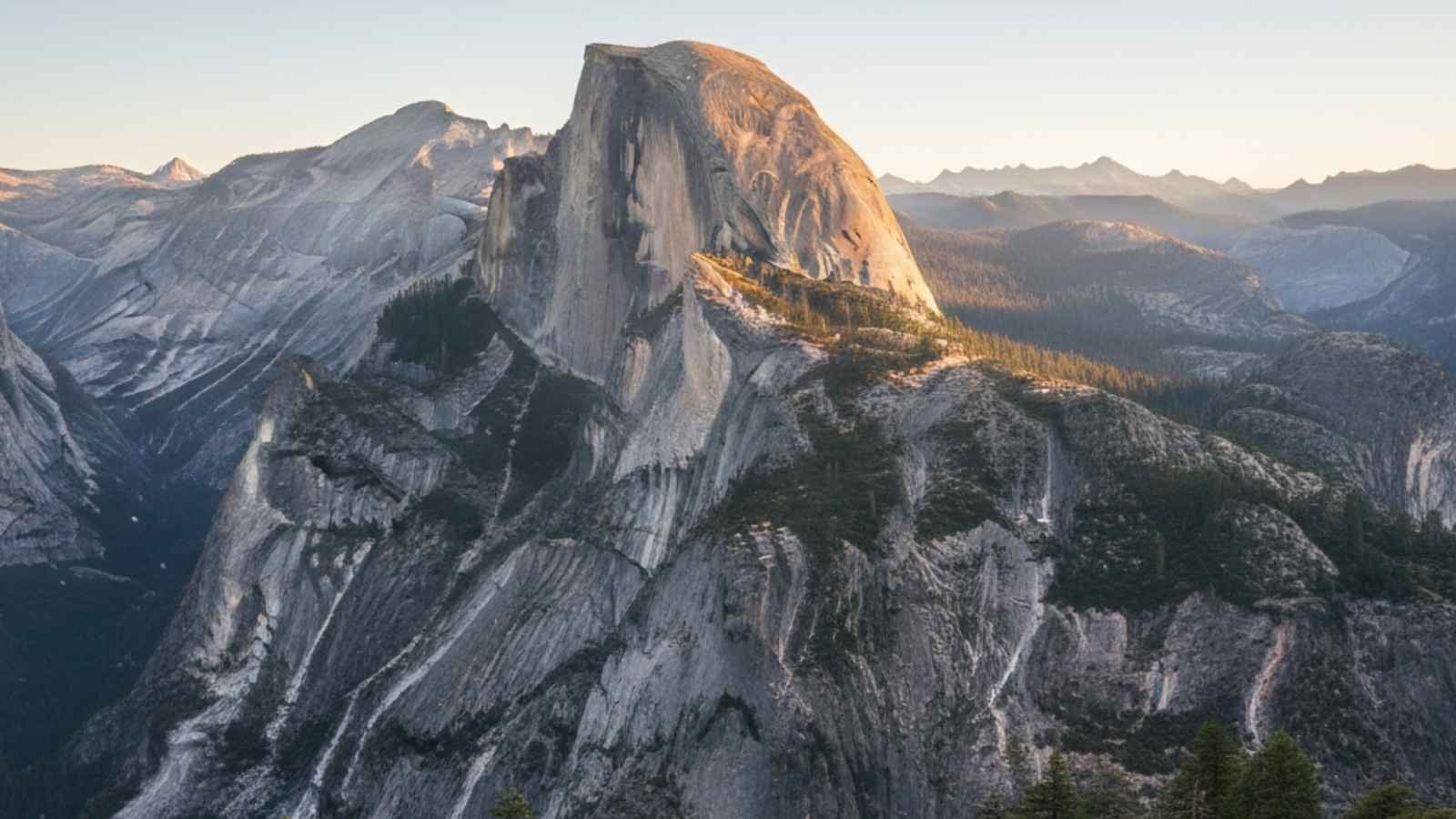
There’s something almost spiritual about standing on the summit of Half Dome, watching the valley unfold thousands of feet below. The trail itself is no small feat—roughly 14 to 16 miles round trip with nearly 5,000 feet of elevation gain—but every step feels like a slow shedding of ordinary life. The granite switchbacks, misty cascades of Vernal and Nevada Falls, and those final steel cables—each section tests your resolve and rewards your spirit in equal measure.
What struck me most was the sense of clarity that came with the climb. Somewhere between exhaustion and awe, you stop thinking about what’s waiting in your inbox and start caring about what’s right in front of you—the burn in your legs, the crisp air, the sound of the wind echoing off stone. It’s that rare kind of challenge that reminds you why effort matters and how small distractions pale next to a view earned through grit.
When you finally reach the top, you realize it’s not about conquering a mountain—it’s about reconnecting with yourself. That moment of quiet reflection on the summit? It’s the kind that makes you rethink what’s worth holding onto in your day-to-day life.
- Trail Length: 14–16 miles round trip
- Elevation Gain: 4,800–5,000 feet
- Best Months to Visit: May to October (permits required for cables)
- Trail Difficulty: Strenuous
- Permit Needed: Yes, for the cables section
- Highlight: The steel cable ascent to the summit
2. Kalalau Trail – Nā Pali Coast State Park, Hawaii
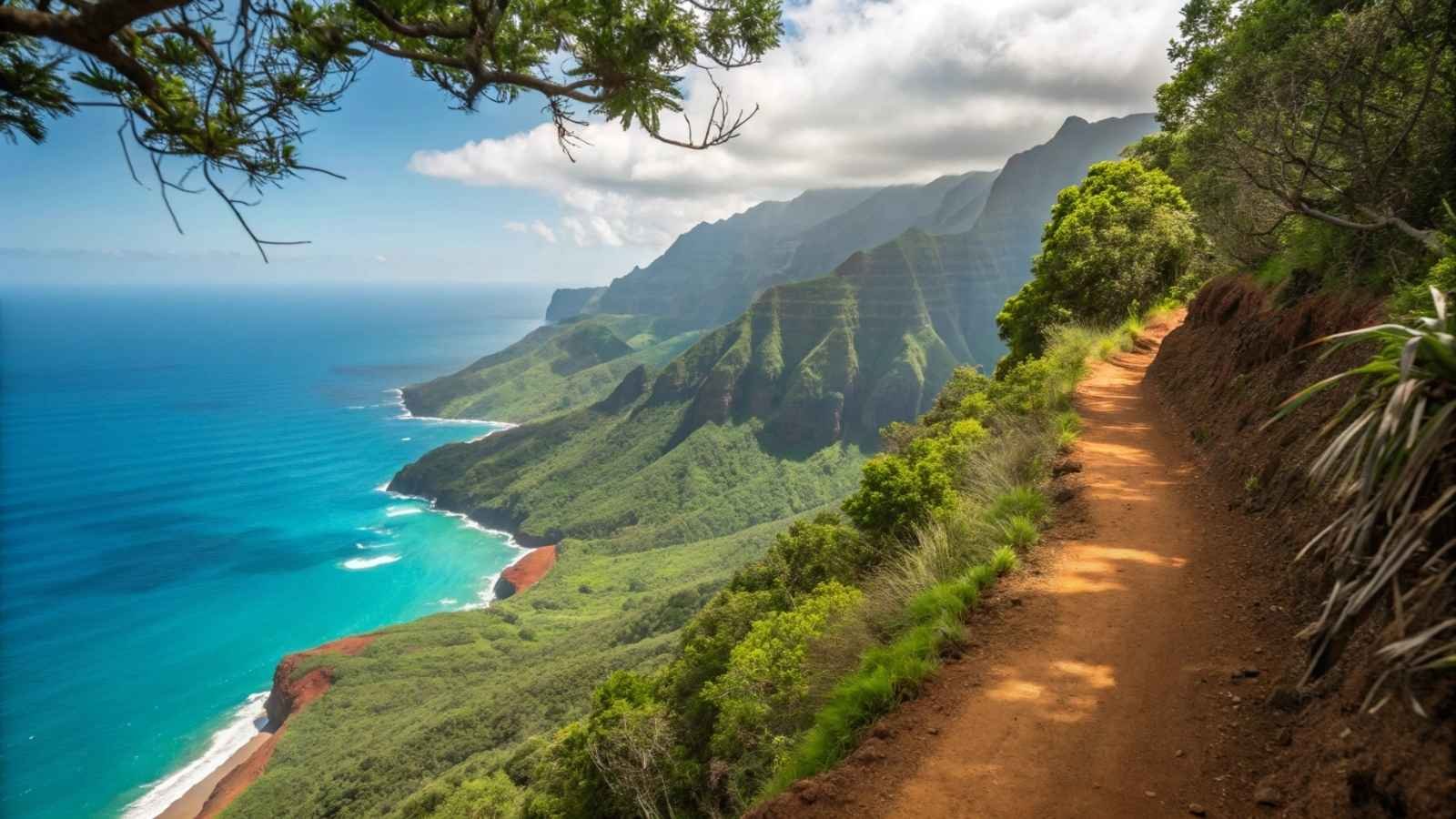
The Kalalau Trail is where wild beauty meets raw freedom. Stretching 11 miles each way along Kauai’s Nā Pali Coast, it’s a trail that challenges more than your stamina—it challenges your sense of what’s possible. The narrow cliffside paths, emerald valleys, and sheer drop-offs into the turquoise ocean below feel surreal, yet entirely grounding.
Every twist and turn holds something new—a hidden waterfall, a sudden sea breeze, the scent of wet earth after rain. It’s not just a hike; it’s a full sensory reset. There’s a rhythm to it—your breath syncing with crashing waves, your steps timed to the pulse of nature itself. Those who make it to Kalalau Beach at the end often speak of a deep calm, the kind that comes only after pushing past every limit you thought you had.
By the time you return, work emails and daily routines seem trivial compared to what you’ve just lived through. It’s the kind of hike that teaches you adventure doesn’t wait for the perfect time—it begins the moment you decide to go.
- Trail Length: 22 miles round trip
- Elevation Gain: About 5,000 feet
- Best Months to Visit: May to September (dry season)
- Trail Difficulty: Very strenuous
- Permit Needed: Yes, for camping beyond Hanakapiai Valley
- Highlight: Remote Kalalau Beach and sweeping ocean cliffs
3. Angels Landing – Zion National Park, Utah
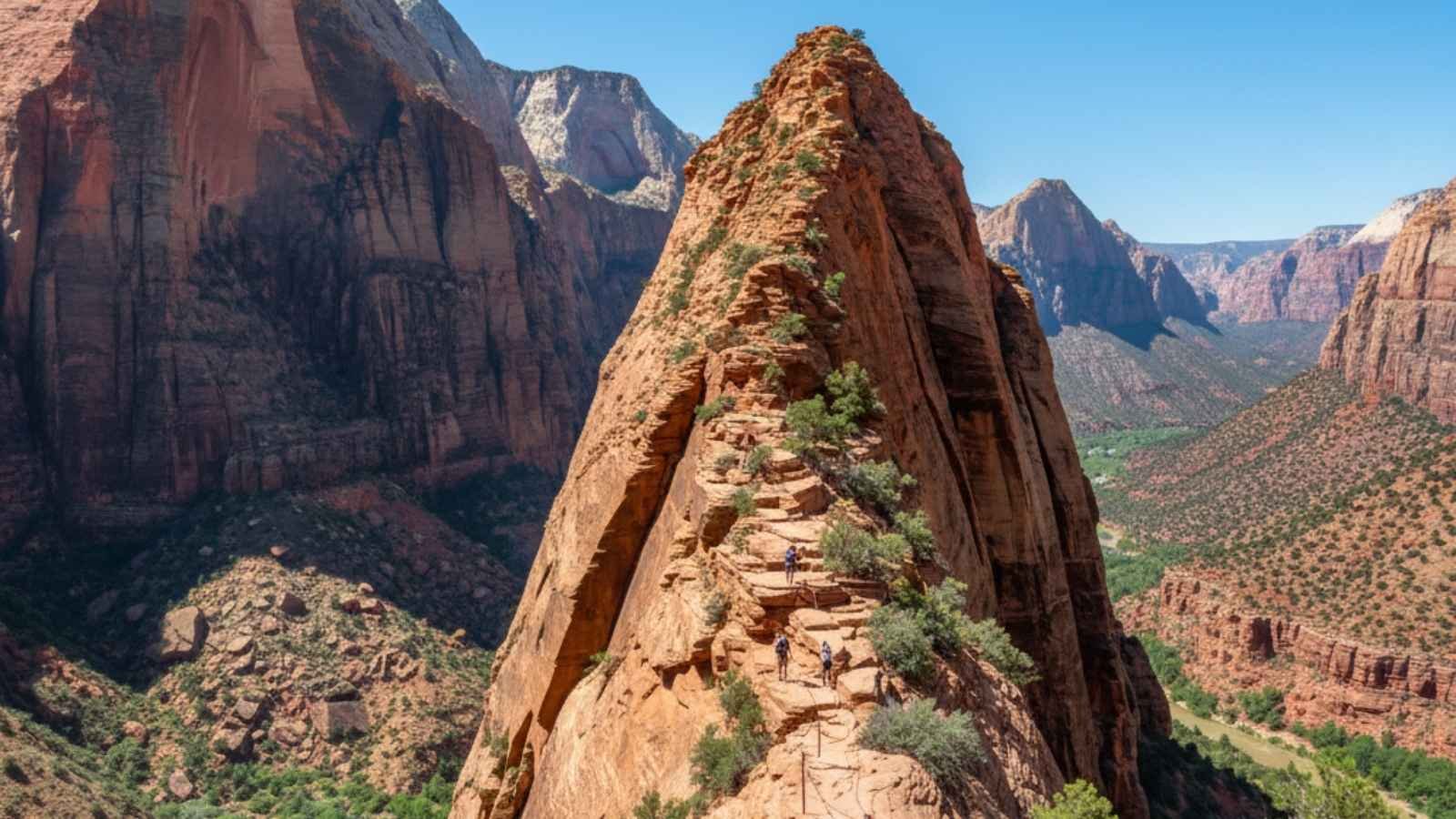
If you’ve ever wanted to feel fully alive, Angels Landing delivers that in spades. The trail begins innocently enough—steep switchbacks through sandstone walls—but the final half-mile transforms into one of the most exhilarating climbs in the country. The narrow ridge, with chains to steady your grip and sheer drops on both sides, is where nerves meet thrill.
What makes Angels Landing unforgettable isn’t just the exposure or the view—it’s the transformation that happens along the way. Fear gives way to focus, and hesitation turns into trust—in your balance, your strength, and the moment. Standing on the summit, with Zion Canyon spreading out beneath you in hues of red and gold, there’s a sense of victory that goes far beyond hiking.
You leave this trail different from how you started. It’s not about adrenaline or risk—it’s about the rare clarity that comes when you push through fear and find yourself stronger on the other side.
- Trail Length: 5.4 miles round trip
- Elevation Gain: 1,488 feet
- Best Months to Visit: March to October
- Trail Difficulty: Strenuous (exposed sections)
- Permit Needed: Yes, for the final chain section
- Highlight: Narrow ridge climb with panoramic views
4. Highline Trail – Glacier National Park, Montana
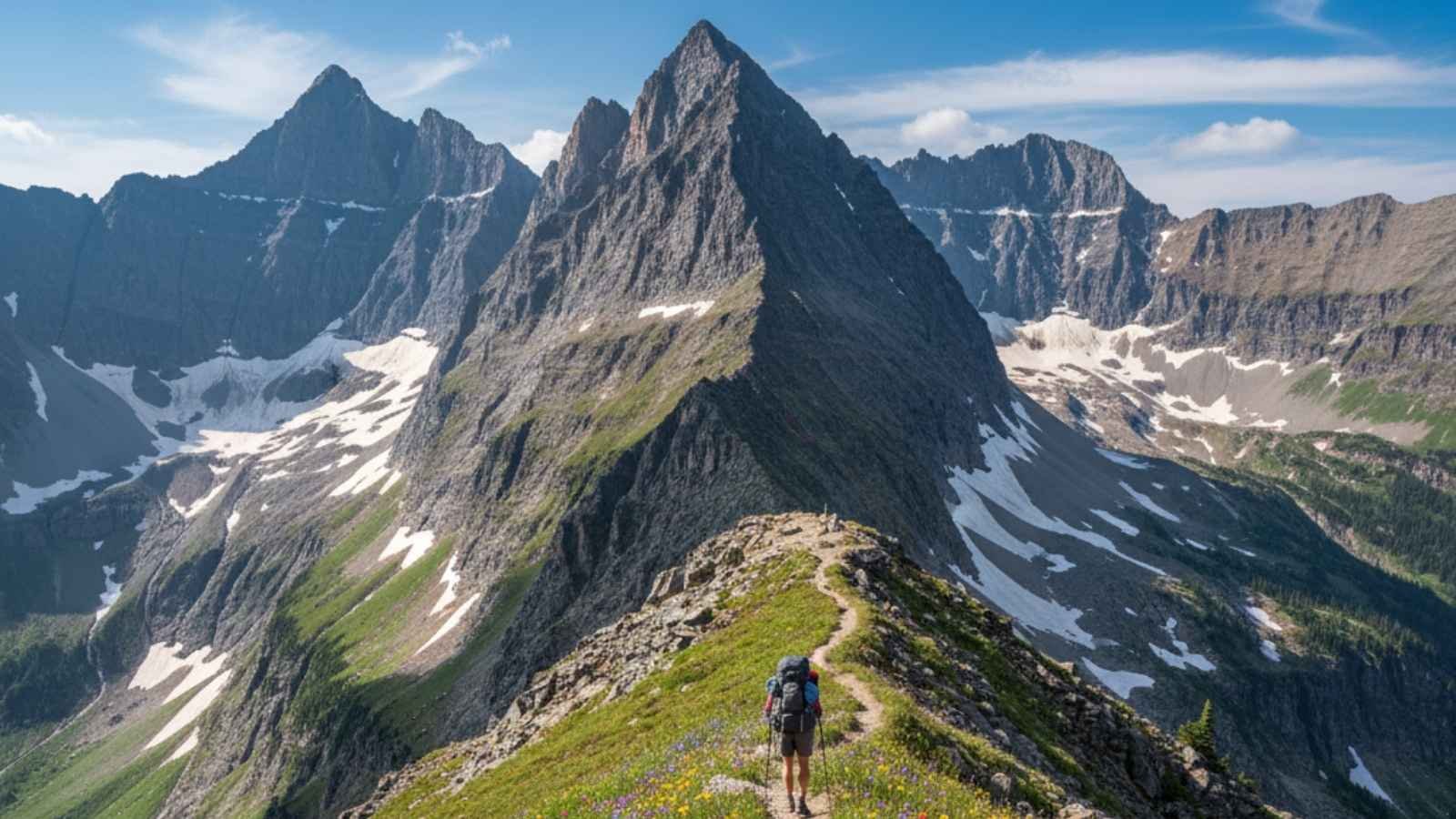
There’s a quiet kind of magic to the Highline Trail, the kind that unfolds slowly and stays with you long after you leave. Winding along the Continental Divide for over 11 miles, this trail delivers some of the most sweeping views in the American wilderness. The cliffs are dramatic, the wildflowers are endless, and the sense of peace is absolute.
The best part? It’s not a grueling sufferfest like some other national park hikes—it’s strenuous yet steady, a chance to walk for miles with the world laid out beneath your boots. You might cross paths with mountain goats or watch clouds drift over peaks that feel untouched by time. There’s no better reminder that the world still holds wild, unspoiled beauty.
For many, the Highline becomes a metaphor for perspective—how the higher you climb, the smaller your worries feel. It’s the perfect trail for anyone craving both movement and stillness at once.
- Trail Length: 11.8 miles one-way (can be extended)
- Elevation Gain: About 800–1,000 feet
- Best Months to Visit: July to September
- Trail Difficulty: Moderate to strenuous
- Permit Needed: No
- Highlight: Alpine meadows and views of the Garden Wall
5. Skyline Trail – Mount Rainier National Park, Washington
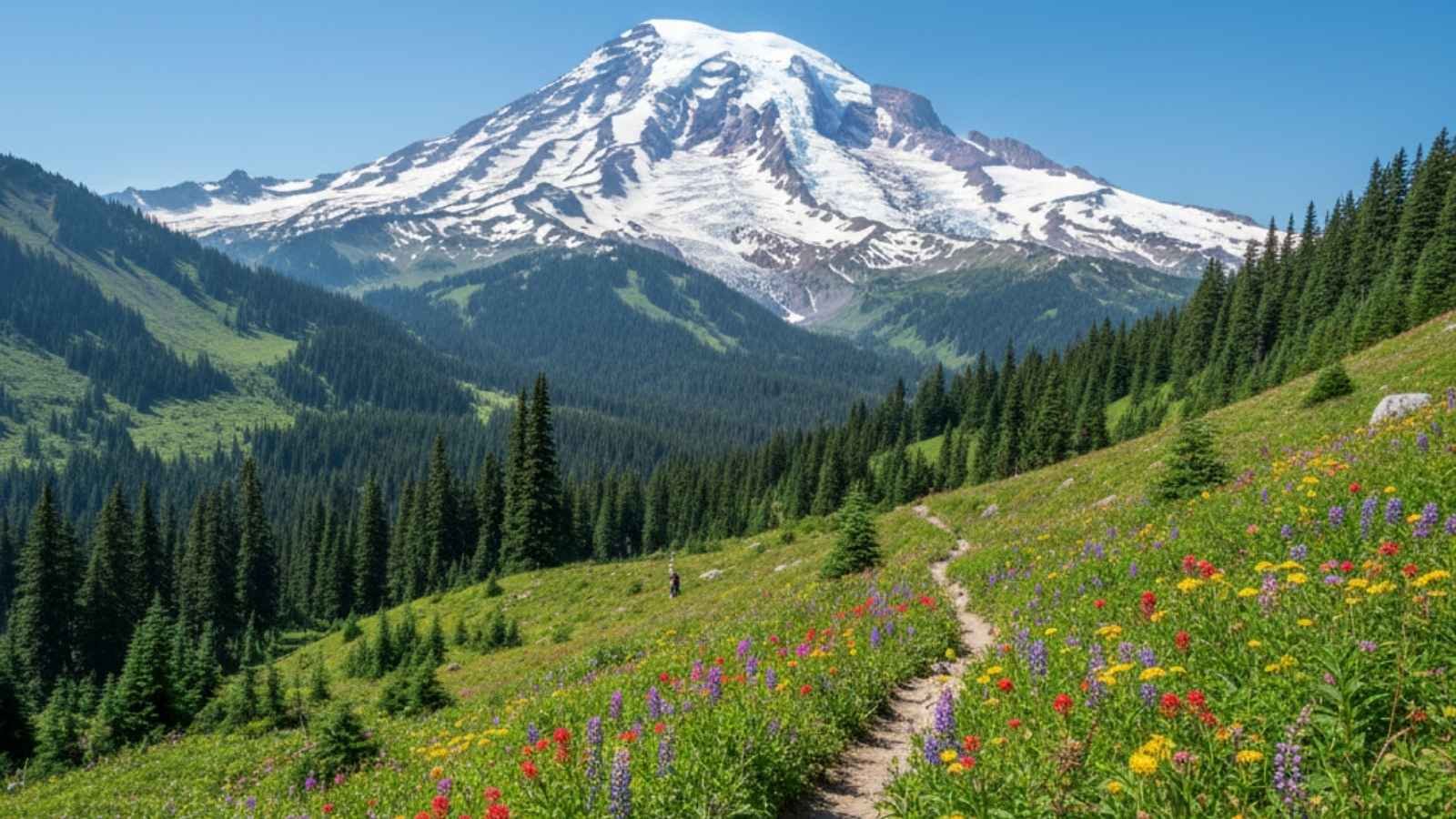
The Skyline Trail feels like walking into a living postcard. Every step brings new drama—wildflower meadows exploding with color, shimmering glaciers glinting in the sunlight, and of course, the commanding presence of Mount Rainier itself towering over it all. It’s a 5.5-mile loop that somehow feels both meditative and cinematic.
The climb to Panorama Point is where the trail really shines. Suddenly, you’re above the clouds, with views stretching across to Mount Adams and Mount St. Helens. The air feels crisp, the silence almost sacred. It’s the kind of place where time slows down and you start to realize that awe is the antidote to burnout.
There’s something incredibly humbling about being so close to a mountain that massive—it resets your priorities in the best way. You come down from the Skyline Trail not just tired, but transformed, carrying a little more gratitude for what the world still has to offer.
- Trail Length: 5.5 miles loop
- Elevation Gain: 1,700 feet
- Best Months to Visit: July to September
- Trail Difficulty: Moderate
- Permit Needed: No (unless camping overnight)
- Highlight: Views of Mount Rainier, alpine meadows, and glaciers
6. Bright Angel Trail – Grand Canyon National Park, Arizona
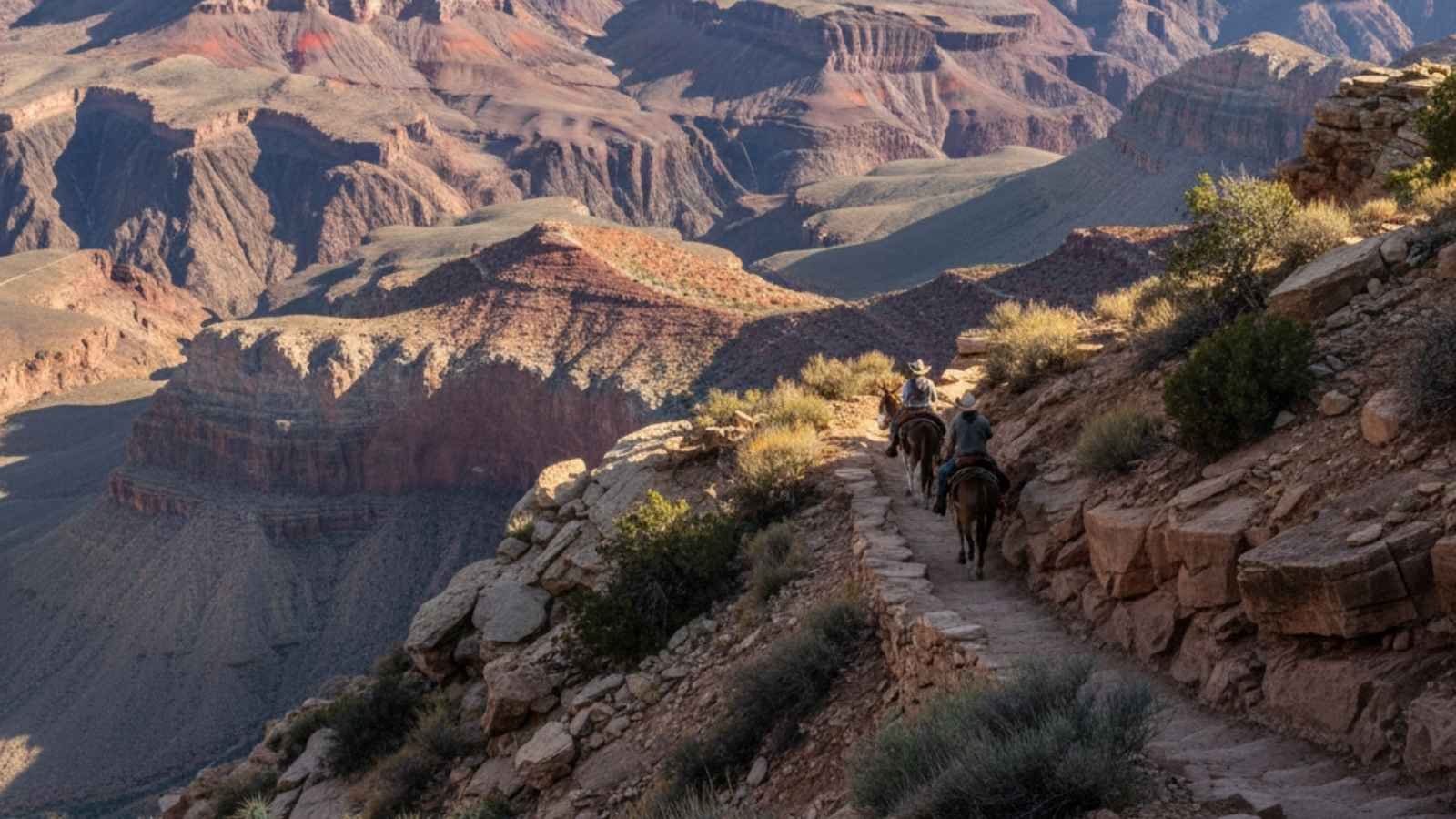
Few trails make you feel the magnitude of nature quite like the Bright Angel Trail. Descending from the South Rim into the heart of the Grand Canyon, it’s a reverse hike—what feels easy at first becomes a true test on the way back up. But every mile down reveals another layer of color and history: ochre cliffs, fossil-studded walls, and that endless canyon silence that somehow hums with life. It’s as if the world slows down to let you take it all in.
What makes Bright Angel so powerful isn’t just its scenery—it’s the way it teaches patience and endurance. You start to respect the rhythm of your steps, the necessity of water breaks, and the simple beauty of moving deliberately through a landscape millions of years old. It’s a journey that rewards awareness over speed, and reflection over conquest.
When you finally ascend back to the rim, sweat-soaked and triumphant, there’s a quiet satisfaction that no workday victory could ever match. You’ve earned that view twice—once going down, and once again coming up.
- Trail Length: 9.5 miles one-way to the river (can turn around sooner)
- Elevation Change: 4,380 feet
- Best Months to Visit: March to May, September to November
- Trail Difficulty: Strenuous, especially uphill return
- Permit Needed: For overnight stays below the rim
- Highlight: Layered canyon views, natural springs, and historic resthouses
7. Cadillac Mountain South Ridge Trail – Acadia National Park, Maine

If Half Dome feels like a triumph and Bright Angel feels like a test, then Cadillac Mountain’s South Ridge Trail feels like a revelation. The 8-mile round trip is a steady climb through granite ledges, pine forests, and open sky—all leading to the summit of the highest peak on the U.S. Atlantic coast. But the real magic comes at dawn, when you realize you’re among the first in the country to see the sunrise.
There’s something deeply grounding about the trail’s pace. It’s not rushed, not grueling—just consistently rewarding. The scent of salt air mixes with pine, gulls drift overhead, and the Atlantic glows below. You start to feel part of something vast yet intimate, as if the world is quietly welcoming you back to what truly matters.
By the time you reach the summit, you’ll understand why so many say this trail reminds you how small life’s noise really is. The climb may take a few hours, but the calm it gives you lasts far longer.
- Trail Length: 8 miles round trip
- Elevation Gain: 1,350 feet
- Best Months to Visit: May to October
- Trail Difficulty: Moderate
- Permit Needed: No
- Highlight: Sunrise views over the Atlantic, granite ridges, and coastal forest





